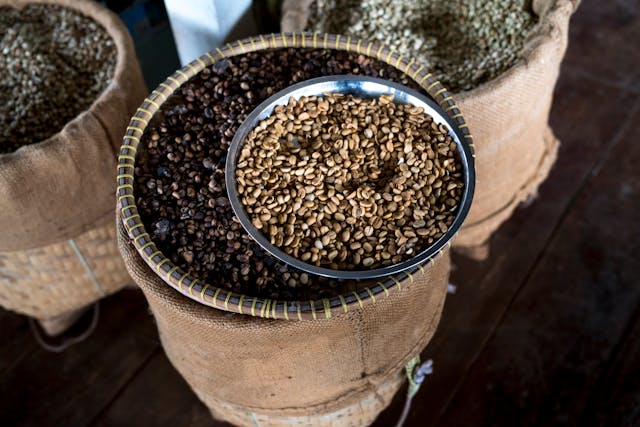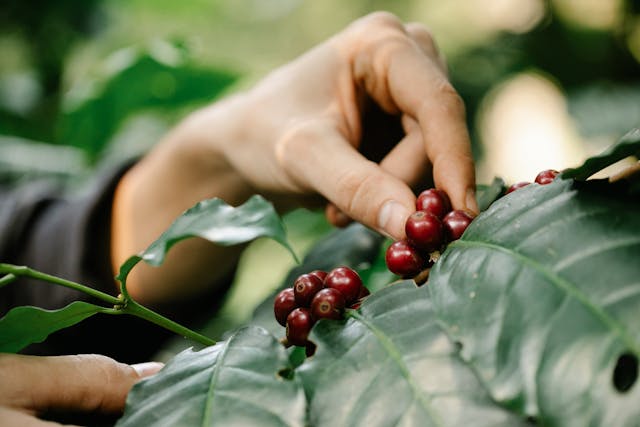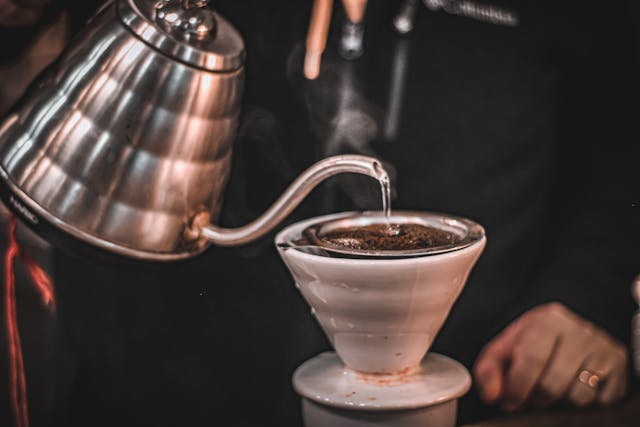Coffee enthusiasts, once content with the familiar Arabica and Robusta beans, are now venturing into uncharted territories, seeking unique flavors and hidden treasures within the vast world of coffee.
Enter Liberica – a type of coffee bean, the enigmatic and often overlooked species of coffee that offers a captivating journey for those willing to explore beyond the norm. With its distinctive taste profile and rich history, Liberica coffee beans have long remained hidden in plain sight, waiting to be discovered by intrepid coffee aficionados.
But why has this rare coffee species been shrouded in mystery for so long? The answer lies in its lesser-known origins and limited cultivation. While the Robusta and Arabica varieties dominated the coffee scene, Liberica quietly thrived in select regions, far from the spotlight. Now, as specialty coffee gains popularity, the time has come to shed light on the unique characteristics and untapped potential of Liberica coffee.
What are Liberica Coffee Beans?

In a world where Arabica and Robusta coffee are the main global coffee varieties, there exists a hidden gem that whispers tales of exotic flavors and a rich history waiting to be unraveled. Let’s embark on a journey to discover the origin, characteristics, and unique flavor profile of this enigmatic coffee.
Origin and History of Liberica Coffee
Liberica coffee’s story begins in West Africa, specifically Liberia, where it naturally originated. However, it was during the 18th century that this remarkable coffee variety took its first steps towards recognition when it was commercially cultivated in the Philippines. Spanish friars introduced Liberica coffee to the city of Lipa in the 1740s, marking the beginning of its journey into the wider coffee world. Today, the majority of Liberica trees are grown and consumed in Southeast Asia, particularly in the Philippines, Indonesia, and Malaysia.
Coffee Plant: Coffea Liberica
Diving into the botanical realm, Liberica coffee stands out with its distinct characteristics. Unlike other coffee species, Liberica plants are much larger, reaching towering heights that captivate the eye. These grand trees with glossy, elongated leaves create an enchanting canopy under which the coffee cherries ripen. The cherries themselves are larger than those of Arabica and Robusta, with an asymmetric shape that adds to their unique allure.
Profile and Taste of Liberica Coffee
As you indulge in a cup of Liberica coffee, prepare to embark on a flavor journey unlike any other. Renowned for its boldness and robustness, Liberica boasts a flavor profile that stands out from its counterparts. With earthy and smoky undertones, Liberica coffee entices the palate with its distinctively full-bodied, dark flavor. Hints of floral and fruity notes intermingle, offering a delightful complexity that keeps you coming back for more.
The aroma of Liberica coffee is equally captivating, filling the air with a rich bouquet that lingers long after each sip. Its deep, intense fragrance transports you to the lush landscapes where these exceptional beans are cultivated, invoking a sense of adventure and discovery.
How is Liberica Coffee Grown?

Behind every delicious cup of Liberica coffee lies a meticulous and intricate process that begins in the exotic plantations where these exceptional beans are grown. From nurturing the coffee plants to protecting them from pests and diseases, every stage contributes to the unique flavor profile and aroma that captivates coffee enthusiasts.
Coffee Plantation and Growing Conditions
To cultivate thriving Liberica coffee trees, farmers employ various farming methods tailored to their specific regions. The key to successful cultivation lies in providing optimal growing conditions. Liberica coffee thrives in warm and humid climates with temperatures ranging from 77°F to 86°F (25°C to 30°C). It prefers altitudes between 200 to 700 meters above sea level, allowing for the perfect balance of temperature, sunlight, and moisture.
The soil requirements for Liberica coffee are specific, as it favors well-drained soil rich in organic matter. Farmers often add compost or manure to enhance soil fertility and provide a conducive environment for the growth of coffee trees. Additionally, the pH level of the soil should ideally range between 6.5 and 7.5, ensuring the right acidity for optimum coffee bean development.
It is worth noting that Liberica coffee trees take longer to mature compared to other coffee species. It can take up to three to four years before the plants produce their first harvest. However, the wait is worth it, as Liberica coffee plants have an extended lifespan, with some trees remaining productive for up to 40 years.
Coffee Rust and Protection
Coffee rust, caused by the fungus Hemileia vastatrix, poses a significant threat to coffee plants, including Liberica. This devastating disease attacks the leaves, ultimately impacting the health and productivity of the plant. Protecting coffee trees from rust requires a proactive approach.
Farmers employ various strategies to combat coffee rust, including regular monitoring and early detection of infected plants. Pruning affected branches and promptly disposing of infected leaves help contain the spread. Additionally, implementing shade trees or canopies above the coffee trees helps create a microclimate that discourages the growth and spread of the fungus.
Organic methods such as using organic fertilizers and natural pest repellents help maintain the health of the soil and ward off pests without relying on harmful chemicals. Integrated Pest Management techniques, such as introducing beneficial insects like ladybugs and spiders, can also aid in controlling pests that may attack the coffee trees.
Comparing Arabica and Liberica Coffee
Liberica and Arabica coffee are two distinct species, each with its unique characteristics. Liberica beans are larger, elongated, and asymmetric in shape compared to the more common rounded Arabica beans. Liberica coffee typically has a lower acidity level than Arabica, resulting in a bolder and less acidic flavor profile. It boasts earthy and smoky undertones with floral and fruity notes, offering a robust and complex taste experience.
In terms of appearance, Liberica coffee trees stand out due to their towering size, glossy elongated leaves, and plentiful cherries. Arabica, on the other hand, is known for its compact size and delicate foliage. When it comes to aroma, both varieties have their distinct fragrances. Liberica coffee entices with a rich, captivating aroma that complements its bold flavor profile.
How to Brew Liberica Coffee?

Liberica coffee, a hidden gem in the coffee world, offers a unique and captivating taste experience. With its bold flavor profile, earthy undertones, and complex aroma, brewing Liberica coffee requires finesse and attention to detail.
Best Brewing Methods for Liberica Coffee
Several brewing methods can bring out the full potential of Liberica coffee beans. Each method has its advantages and nuances, providing coffee lovers with a range of options to suit their preferences.
- French Press: The French press method showcases the bold flavors and unique characteristics of Liberica coffee. Use a coarse grind to prevent over-extraction and brew for approximately 4-5 minutes. This method results in a full-bodied and rich cup of coffee.
- Drip Coffee Maker: Drip coffee makers offer convenience and consistency. Use a medium grind and follow the manufacturer’s instructions for the water-to-coffee ratio. This method highlights the smoothness and subtleties of Liberica coffee, allowing its flavors to shine through.
- Pour-Over: Pour-over brewing allows for precise control over the extraction process. Use a medium-fine grind and bloom the coffee by pouring a small amount of water over the grounds before continuing with a slow and steady pour. This method brings out the nuanced flavors and floral notes of Liberica coffee.
- Espresso: For espresso enthusiasts, Liberica coffee can offer a distinctive and robust shot. Utilize a fine grind and adjust the extraction time to achieve the desired strength and flavor.
Experimenting with different brewing methods will help you discover the flavors and complexities that suit your taste buds best. Don’t be afraid to try various methods to find your perfect cup of Liberica coffee.
Tips for Brewing Liberica Beans
To brew the perfect cup of Liberica coffee, attention to detail is key. Here are some essential tips to enhance your brewing technique:
- Water Quality: Use filtered or bottled water to ensure the purest taste. Tap water can contain impurities that affect the flavor of your coffee.
- Bean-to-Water Ratio: The ideal ratio for Liberica coffee is typically 1:15 to 1:17 (coffee to water). Adjust this ratio to achieve your desired strength. Experimentation is encouraged to find your preferred balance.
- Grind Size: The grind size plays a crucial role in extraction. For French press and drip methods, a coarse grind is recommended. Pour-over and espresso methods benefit from a medium-fine grind. Invest in a quality burr grinder to achieve consistent results.
- Extraction Time: The extraction time varies depending on the brewing method. Aim for a total brew time of around 4-5 minutes for the French press, while pour-over requires a longer extraction time due to the slower pour. Espresso extraction typically lasts around 25-30 seconds.
- Temperature Control: Brew Liberica coffee at a temperature between 195°F to 205°F (90°C to 96°C) for optimal extraction. Avoid using boiling water, as it can result in over-extraction and bitterness.
By carefully considering these factors and adapting them to your personal preferences, you can unlock the full potential of Liberica coffee and enjoy a truly exceptional cup every time.




